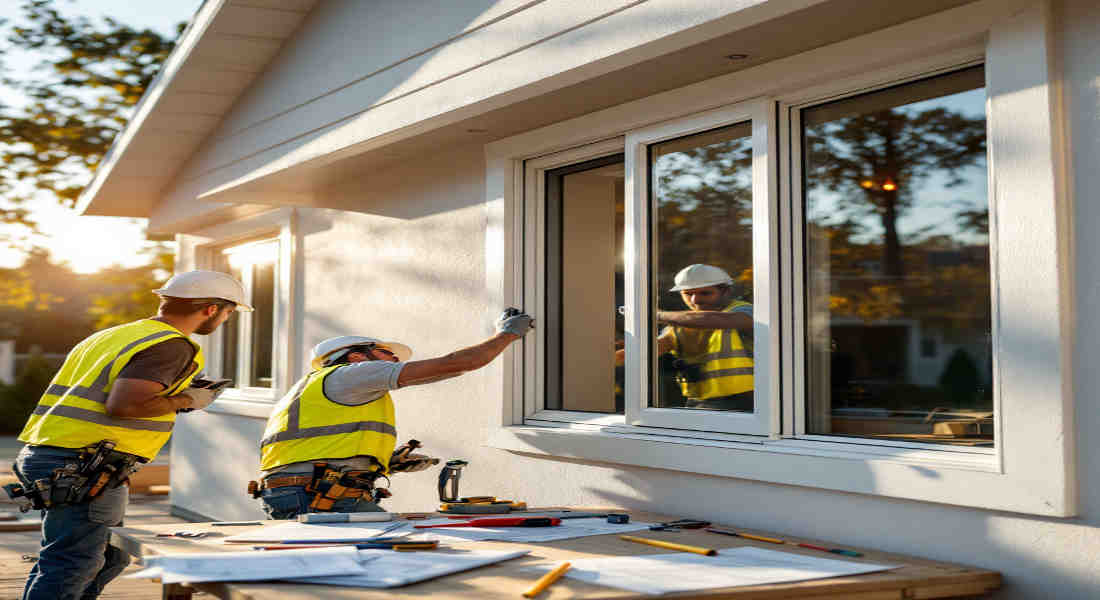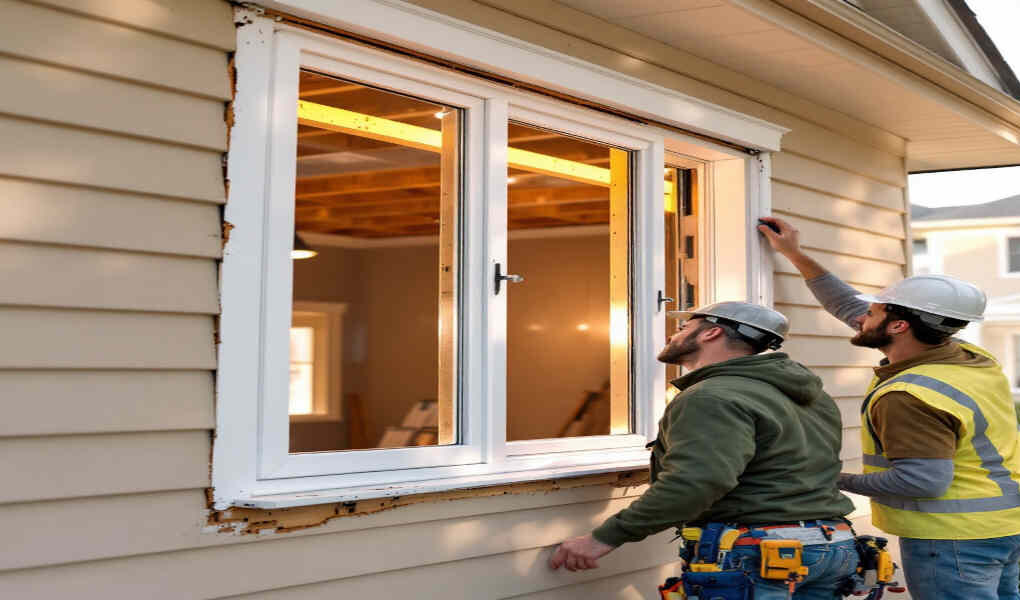Adding windows to the side of your house can bring more natural light into your living space, improve ventilation, and even enhance the aesthetic appeal of your home. However, many homeowners find themselves asking, “Can I legally add windows to the side of my house?” The answer isn’t as simple as a yes or no—it depends on legal frameworks, planning permissions, and practical considerations.
Understanding the Legal Framework for Adding Side Windows
When it comes to modifying your home, understanding the legal requirements is essential. Adding a window to the side of your house may seem straightforward, but there are regulations and restrictions that you must meet.
Permitted Development Rights Explained
In many cases, homeowners can make certain modifications to their property without needing formal planning permission, thanks to Permitted Development Rights. These are rules that grant property owners the ability to make minor changes without going through the lengthy approval process.
For example:
- Replacing or adding windows is generally allowed under these rights, as long as the modification doesn’t alter the overall appearance of the house significantly.
- Windows must adhere to specific privacy and safety standards, particularly if they’re on upper floors.
However, there are exceptions. Not all homes qualify for permitted development rights, so it’s important to check your property’s specific status.
When Do You Need Planning Permission?
In some situations, planning permission becomes mandatory. Here are the scenarios where this might apply:
- Listed properties: If your home is a listed building, you’ll need permission for almost any modification.
- Conservation areas and protected zones: Homes located in conservation areas, National Parks, Areas of Outstanding Natural Beauty, or World Heritage Sites often have stricter rules.
- Article 4 Direction: If your local council has applied an Article 4 Direction, it can restrict your permitted development rights.
- Non-freehold properties: If you’re not the freeholder of your property (e.g., you live in a leasehold), you’ll need permission from the freeholder.
Local Authority and Subjective Judgement
Your local planning authority (LPA) plays a significant role in determining whether your project is acceptable. Even if your proposed side window complies with general regulations, local authorities may intervene if they believe it would significantly impact neighbours or the surrounding area.
For certainty, consider applying for a Lawful Development Certificate (LDC), which confirms that your project adheres to regulations.
Specific Rules for Side Windows
Adding windows to the side of your house comes with specific rules and requirements. These rules are in place to protect privacy, safety, and the overall appearance of neighbourhoods.
You may also read (how can you dispose of waste at home).
Privacy and Obscure Glazing Requirements
One of the most common rules for side windows is that upper-floor windows must meet privacy standards:
- They should be obscure-glazed (frosted or textured glass to prevent clear visibility).
- They must not open unless the part that opens is 1.7 meters above the floor level.
The purpose of these rules is to prevent overlooking into neighbouring properties, ensuring that your new window won’t compromise anyone’s privacy. Obscure glazing is rated on a scale from 1 to 5, with 5 being the most private.
Exceptions and Special Cases
While most side windows are subject to these privacy rules, there are exceptions:
- Staircase or landing windows: These may not need to meet strict privacy standards, as they’re less likely to infringe on neighbour privacy.
- Bay windows: If you’re adding a bay window to the side of your house, it may be considered an extension, which has its own set of rules and permissions.
Step-by-Step Process: How to Legally Add Windows to the Side of Your House
Here’s a step-by-step guide to ensure your project is legally compliant and hassle-free.
Step 1: Assess Your Property’s Status
Start by checking:
- Whether your home has permitted development rights.
- If your property is in a restricted area like a conservation zone.
- Whether your property is subject to Article 4 Direction restrictions.
This information can usually be obtained from your local council’s planning department or your property deed.
Step 2: Planning and Design Considerations
Carefully consider the design and placement of your window:
- Choose a style and material that matches your existing windows. This can help your project blend seamlessly and may make it easier to gain approval if needed.
- Think about privacy: Avoid placing windows where they might overlook neighbouring properties.
Step 3: Consulting Professionals
For more complex projects, it’s a good idea to hire professionals:
- A planning consultant or architect can help you navigate local regulations and design the best solution.
- Technical drawings prepared by professionals can make the planning permission process smoother.
Step 4: Applying for Permission (If Needed)
If planning permission is required:
- Submit an application to your local planning authority.
- Include relevant documents, such as technical drawings, a site plan, and a detailed project description.
- Wait for approval before beginning any work.
You may also read (understand your homes electrical wiring).
Common Questions About Adding Side Windows
Can I Add a Window Without My Neighbour’s Permission?
In most cases, you don’t need your neighbour’s permission to add a window. However:
- If the window overlooks their property, privacy rules (such as obscure glazing) will apply.
- For properties close to the boundary, you may need to comply with party wall agreements.
What If My House Is a New Build or in a Housing Estate?
New-build homes and housing estates often come with covenants or restrictions set by the developer. These may limit your ability to make external modifications, including adding windows.
How Do Building Regulations Apply?
In addition to planning rules, you’ll need to meet building regulations, which cover:
- Ventilation: Windows must provide adequate airflow.
- Safety: Upper-floor windows must meet safety standards to prevent falls.
- Fire escape: Certain windows may need to serve as emergency exits.
Practical Tips for a Successful Side Window Project
Here are some tips to help you achieve the best results:
Choosing the Right Window Type
- Fixed vs. opening windows: Fixed windows are great for privacy, while opening windows provide ventilation.
- Obscure vs. clear glass: Use obscure glass for areas where privacy is a concern.
Maximising Light While Maintaining Privacy
- Place windows strategically to allow natural light into your home without compromising privacy.
- Consider high-level or clerestory windows for spaces like bathrooms.
Energy Efficiency and Security
Modern glazing options, such as double or triple glazing, can improve insulation and reduce energy costs. Look for windows with built-in security features like multi-point locking systems.
Mistakes to Avoid When Adding Windows to the Side of Your House
Avoid these common mistakes to save time, money, and stress:
Ignoring Local Rules and Restrictions
Starting work without checking regulations can lead to fines or having to reverse your project.
Poor Design Choices
Using mismatched or inappropriate window styles can harm your home’s aesthetic and resale value.
Overlooking Neighbour Relations
Good communication with neighbours can prevent disputes and ensure a smooth project.
Real-Life Examples and Case Studies
Example 1: Adding Side Windows in a Conservation Area
A homeowner in a conservation area faced challenges due to strict local rules. By working with an architect and using matching materials, they successfully added a side window.
Example 2: Success with Permitted Development Rights
A couple added an obscure-glazed bathroom window under permitted development rights, avoiding the need for planning permission.
Example 3: When Planning Permission Was Needed
A homeowner’s initial application for a large side window was denied due to privacy concerns. After revising the design and consulting with neighbours, they gained approval for a smaller, obscure-glazed window.
You may also read (home depot bruce w165 floor polish).




